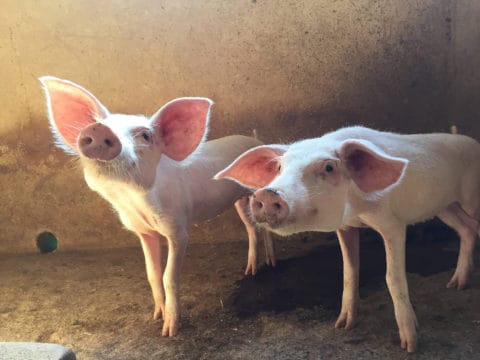To most people, the process of research evokes thoughts of drab articles, strict deadlines and a large amount of time on word processors. However, behind the curtain of theses and peer-reviews, the fruits of research are often curiously captivating.
The University of Saskatchewan is hosting its third annual Images of Research competition, a contest to find the most visually appealing and descriptive photographs of research conducted at the U of S. The contest is open to students, staff, faculty and alumni and aims to combat the misconception that research is a dull and monotonous process, calling attention to the beauty encountered by researchers in both scholarly and artistic fields.
Daniel Hallen, a specialist in research profile and impact at the U of S and an organizer of this year’s Images of Research contest, believes that the competition provides people with the opportunity to engage more deeply with research practices.
“The contest is really about trying to showcase the great work of researchers from across campus in terms of scholarly and artistic work, on and beyond campus. It’s not just about the research that goes on [at the U of S], because research doesn’t end at the borders of the university. The motto of the contest is that ‘knowledge is beautiful,’ and we can see from what people have submitted that there’s lots of examples of beauty,” Hallen said.

As a veterinary student, Taryn Roberts submitted a photo of her international veterinary experience to the Images of Research contest
In order to accommodate for the broad range of shapes and forms that research can come in, the contest is divided into four categories: from the field, more than meets the eye, community and impact, and finally, research in action. This year, a new video-pitch category was added, which gives researchers one minute to pitch the significance of their work.
Voting for the contest took place online from Mar. 18 to Apr. 1, and the winning images will be displayed from Apr. 11 to 13 and Apr. 17 to 18 in the North Concourse of Place Riel.
Hallen believes that U of S students should pay particular attention to the contest, and to research in general, as it has the potential to inspire passionate intellectual pursuits and add excitement to university life.
“The [U of S] experience doesn’t just have to be limited to going to class … Undergraduates could also be involved in research, and if it is interesting to you, there are ways to get involved … Research is not abstract, and by seeing this sort of research, it’s much easier to envision yourself as a participant in it. So, I hope that people see the results of the competition and think, ‘I could be a part of this,’” Hallen said.
While the contest provides a chance to display the aesthetic qualities of scholarship, Hallen believes that the event is also an effective platform to demonstrate that research is important both in and out of institutions.
“The idea is to get a wider exposure, because it’s not just people at [the] U of S who are seeing this. The institution is not just an ivory tower separate from the community. The research that we do involves the community, and I think this is a good way that we can show the community what it is we’re doing,” Hallen said.
The brand-new video pitch category added this year is dubbed the Making a Difference Video Pitch competition, and it extends the contest’s ability to deliver the benefits of research to a wider audience.
“I think what photography does really well is capture a snapshot, capture a moment. The advantage of having a one-minute video-pitch category is that it allows researchers to condense the essence of what they’re doing, and attach it to what impact they hope it will have … briefly, and [do] it in a succinct and digestible way,” Hallen said.
Both the Images of Research and the Making a Difference competitions attempt to capture the essence of scholarly research, an essence that Hallen believes most people should engage with.
“Some people have an impression that research is dry and boring, and I think we see from these examples that, no, it’s vibrant and interesting — it’s engaging.”
—
Adrian Aquino
Photo: Taryn Roberts / Supplied